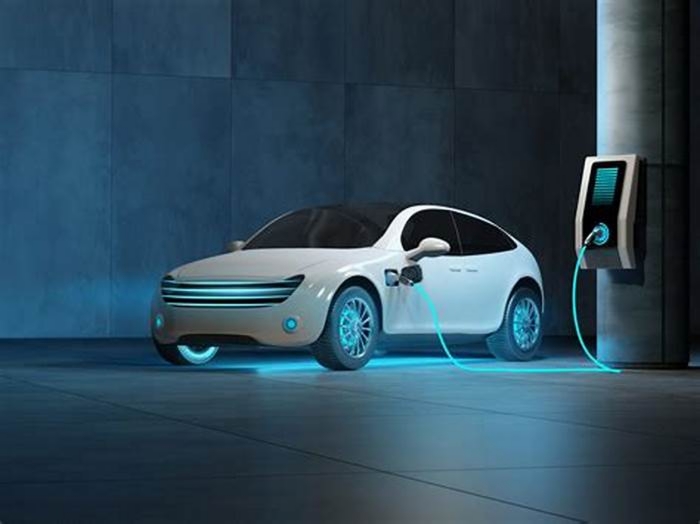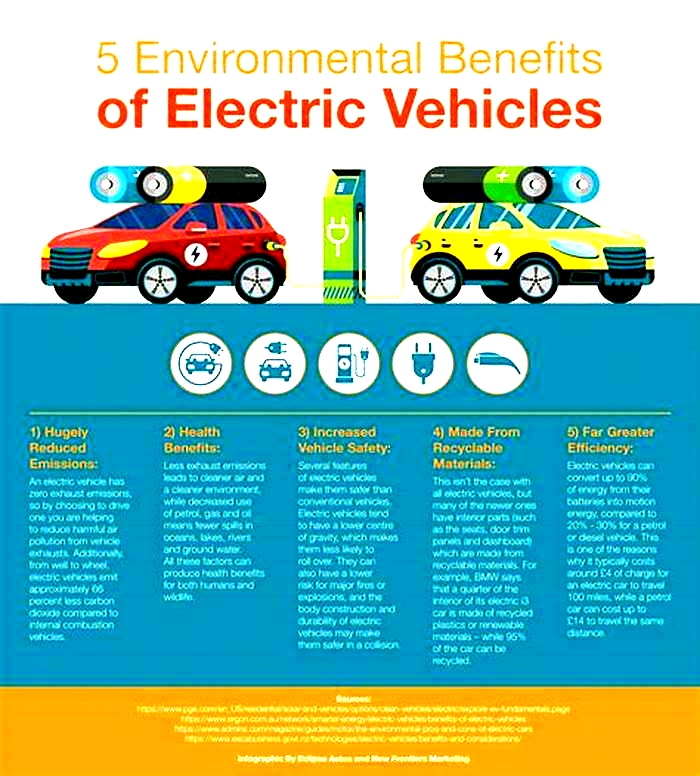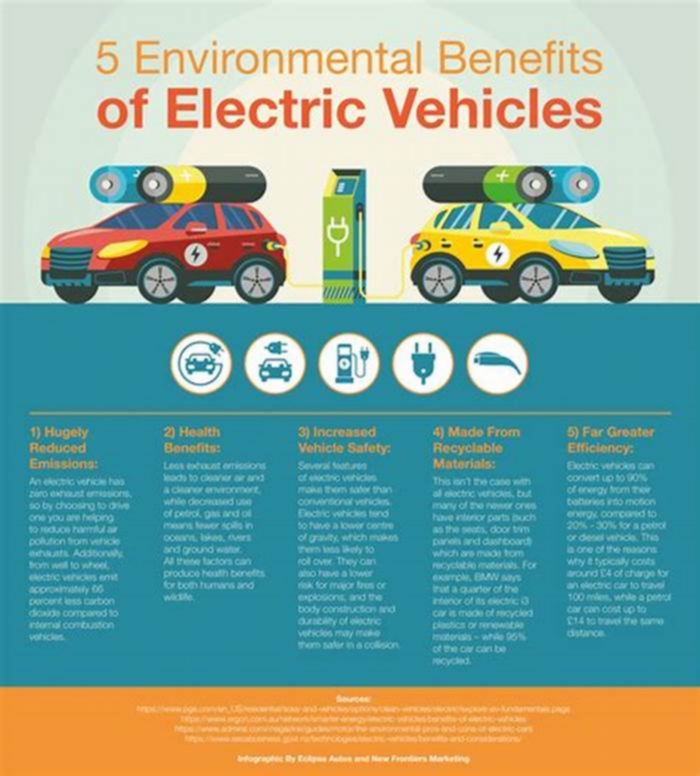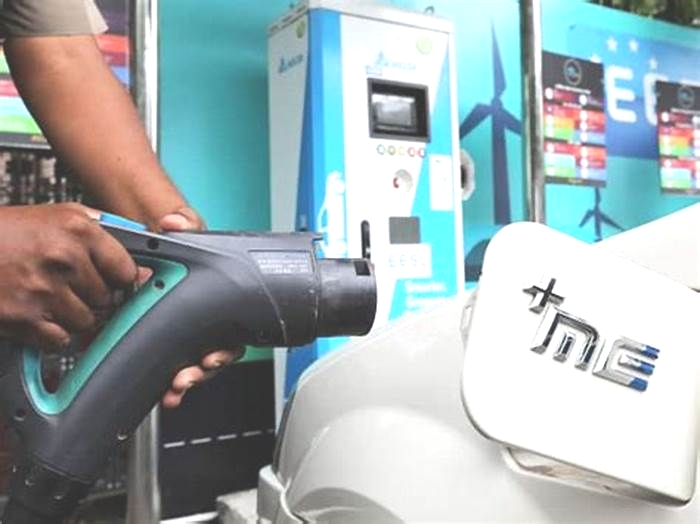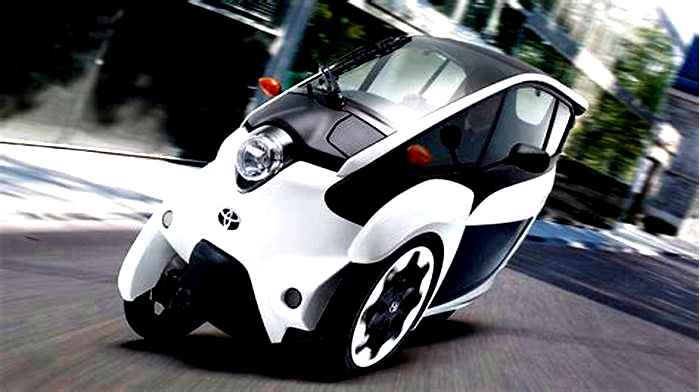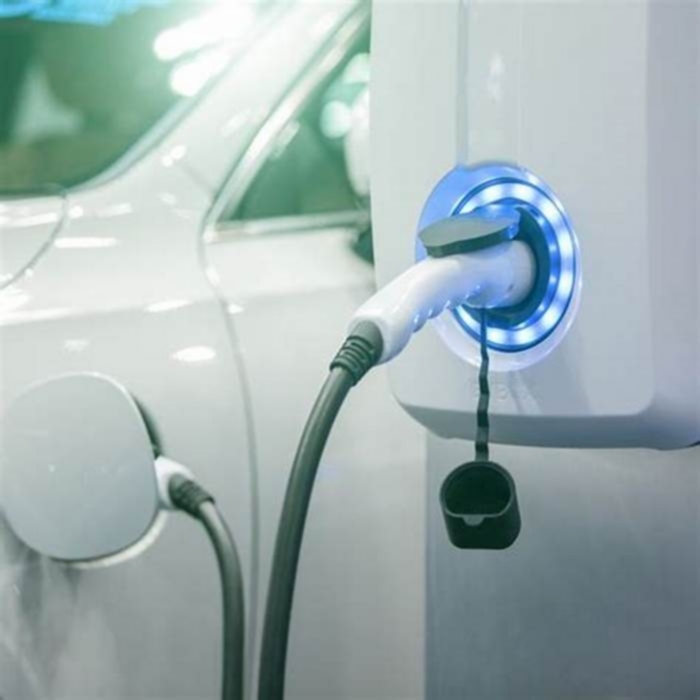The Green Drive How Electric Vehicles Contribute to Sustainable Living
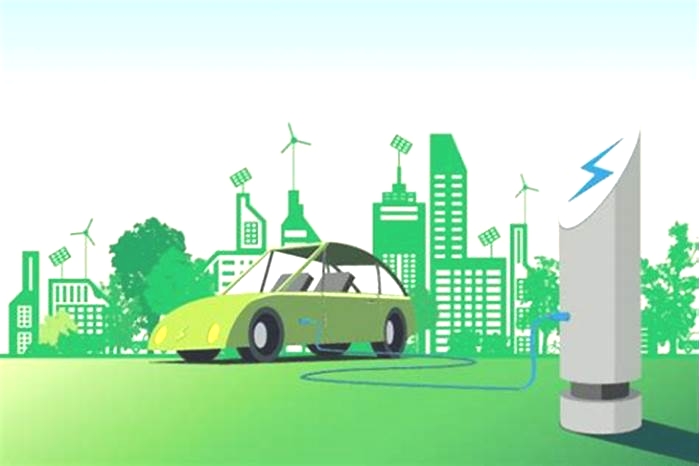
How Green are Electric Vehicles, Really?
Electric vehicles technically dont generate any carbon dioxide at all, so could they be the way to reduce or eliminate the harmful emissions the world is battling? There are a few different theories on the topic.
The CO2 Problem Is Everywhere
Weve all heard of the climate crisis, with weather phenomena becoming ever more extreme and the damage caused to cities and entire countries. Carbon dioxide emissions, booming since the Industrial Revolution, have been inextricably linked to climate change, but the good news is that there are things we can all do about it. Reducing carbon dioxide (aka greenhouse gases) emissions is something every one of us can do, must do, and driving an electric vehicle is just one way to help save the planet.
In the U.S., the Environmental Protection Agency says that transportation related to the burning of fossil fuels accounts for 29 percent of the countrys greenhouse gas emissions. Worldwide, transportation is responsible for a quarter of carbon dioxide emissions, while a few cities even estimate that its the cause of more than half of their emissions problem.
Yes, Even Some EVs Can Generate Emissions
Of course, theres no such thing as a free lunch or, in this case, a free ride. Just because electric vehicles dont have tailpipes doesnt mean they are perfectly clean. In fact, electric vehicles actually generate more emissions during their construction than gasoline-powered cars due to the use of materials that must be mined and other manufacturing issues.
Transportation related to the burning of fossil fuels accounts for 29 percent of the countrys greenhouse gas emissions.
EV charging emissions are generated at local power plants as well; power plants that arent environmentally friendly can potentially reduce the green impact of any EV that must use electricity from them.
Hybrid EVs, of course, can contribute plenty of emissions since most hybrids use some sort of fossil-fuel and electric combination for power, despite the fact those emissions can ultimately be less than those of gasoline powered cars. Still, even when those issues are factored in, EVs that run strictly on battery power seem to come out on top from a green perspective.
How Green Is an EV in General?
Overall, EVs are pretty green. It's a little tricky to compare them to cars that burn fossil fuels but not impossible.
When it comes to comparing vehicle emissions, particularly carbon dioxide, everyones accustomed to miles per gallon, and its easy to see how the amount of fuel a vehicle needs to get around is directly related to how much carbon dioxide it potentially generates.
Lets assume the average vehicle in the United States gets about 25 miles per gallon (mpg); that is, one gallon of gasoline fuel will let you drive 25 miles. As the gas burns, that single gallon releases about 20 pounds of carbon dioxide into the atmosphere.
If driving the average vehicle racks up about 13,500 miles per year, then each typical gasoline-powered vehicle is responsible for releasing over 11,000 pounds of carbon dioxide every year. Thats nearly 6 tons of greenhouse gases just for one car every year!
In comparison, an EV technically produces no emissions itself as its driven. Any EV can also generate emissions, of course, when local power grids are used to charge the vehicle. The U.S. Department of Energy has a handy emissions calculator to help you see how sources of electricity in your local area have an effect on EV and gasoline-powered car emissions.
EV hybrid counterparts, which do use some gasoline processes, typically generate about half the emissions of a comparably-sized gasoline vehicle.
Electric vehicles dont use gallons of anything, you might object, so how can we compare fuel economy or emissions? Its like comparing apples and bananas. Okay, lets find some kind of common ground then.
For apples and bananas, nutritionists can compare calories. For conventional vehicles and electric vehicles, experts compare energy content in kilowatt-hours (kWh). Once scientists determined a gallon of gasoline contains the same amount of energy as 33.7 kWh of electricity, the comparison became pretty simple. Using this bit of information, the Environmental Protection Agency (EPA) refers to electric vehicle fuel economy in miles per gallon equivalent (mpge), which makes it much easier to compare conventional and electric vehicles.
Bailey Mariner
For emissions, not strictly based on mpge, electric vehicles still shine nicely against gasoline vehicles. Experts say that, across the United States, the average 80-mpge electric vehicle generates just 2 tons of carbon dioxide per year, driving an average 11,500 miles. The emissions generated outside of actual driving depend entirely on whatever powers the grid wherever a driver charges their vehicle; that mix can vary from 100 percent renewable energy sources to 100 percent fossil fuels.
If your part of the electric grid runs on hydroelectric, solar, or wind power, your electric vehicle will generate nearly zero emissions. If your grid is powered by coal, oil, or natural gas, on the other hand, your 80-mpge electric vehicle could potentially generate 4 tons of carbon dioxide annually.
Given the fact that the average gasoline-powered vehicle generates those 6 tons of emissions on average annually, that still gives both EVs the edge when it comes to saving the planet.
Some People Say Electric Vehicles are a Green Dream
Even if electric vehicles do produce fewer carbon dioxide emissions than gasoline counterparts, the story isnt all wine and roses. EVs are still cleaner than conventional vehicles, no matter how you lay out the deck, but there are some drawbacks for naysayers to call them just a green dream. Three key arguments give them their ammunition.
Electric Vehicle Production Generates Higher Emissions
Its true that electric vehicles use some very special materials in their construction. Rare earth metals are required to build batteries, electric motors, and the electronics to control it all. Extracting cobalt, lithium, and neodymium is responsible for soil and water pollution. The miners of those materials, which sometimes include children, often go without basic protections.
On the flip side, new processes and technology are in constant development, reducing the materials required or using them more efficiently. Responsible company policies are reducing the impact on man and planet day by day.
Electric Vehicles are Hard to Recycle
Particularly in the electronics sector, recycling has always been a challenge, technologically and economically. Electric vehicle manufacturing practices and end-of-life recycling issues is only making things worse.
As companies develop better manufacturing processes and recycling technology, however, recycling is becoming safer every day.
Some Electric Vehicles Generate Higher Emissions
Depending on the vehicle, its possible the least-efficient electric vehicle on the highest-emissions grid could produce carbon dioxide emissions that might indeed be higher than their conventional or hybrid counterparts. Some hybrid electric vehicles, too, could be a source of higher emissions for the same reasons.
Its not the norm, though. More and more grids are replacing or at least augmenting fossil fuels with renewable energy sources, improving emissions for thousands of vehicles at once.
Overall, because electric vehicle driving emissions are so low, higher manufacturing emissions are typically negated within a couple of years of production. By the time the average electric vehicle has been driven just 20,000 miles, its generated the same emissions as the average conventional vehicle, and the disparity between the two just gets wider after that.
Can Electric Vehicles Save the Planet?
Yes, electric vehicles can help save the planet, but only in the same way that eating a salad can help someone lose weight. Just like a balanced diet and exercise are critical to a healthy lifestyle, electric vehicles are just one important part of a broader approach to a healthy planet, right down to its inhabitants, no matter how many legs they have.
Most critically, humans need to come to terms with the fact that the future cost of doing nothing now will eventually outweigh the cost of developing and implementing green technologies and processes today.
Electric vehicles, as clean as they are, still need broader infrastructure support to minimize emissions and improved adoption rates before they can truly make a meaningful impact. Carbon capture, grid-level storage, and the use of renewable energy sources will improve emissions by tens of thousands of electric vehicles at a time. Adding more public charging stations and requiring compatible wiring in new manufacturing, too, will make it easier for more people to use electric vehicles.
Aside from electric vehicles, other vehicle-related practices and choices can make a significant impact on emissions and climate change. Buying locally instead of ordering online reduces emissions related to shipping. Carpooling, carsharing, public transportation, or cycling to work or school can reduce emissions related to daily activities. Retrofitting cities with new forms of emission-free transportation, such as those found in micromobility trends, can have a significant impact on emissions when they help residents move around easier without resorting to fossil fuels.
Thanks to technological and infrastructure advances in the last decade, electric vehicles are far more accessible than many people think. Take stock of your own actual transportation needs and learn all you can about EVs. The chances are good you could add an electric vehicle into your life with very little change to your daily driving habits and contribute your own small part to save the planet.
Electric Vehicles
Electric vehicles (EVs) are a cleaner alternative to gasoline- or diesel-powered cars and trucksboth in terms of harmful air pollution, and the greenhouse gas emissions that are causing climate change.Most cars and trucks use an internal combustion engine (ICE), powered by burning oil-based fuels. When burned, those fuels create climate-warming carbon dioxide (CO2) and other pollutants the vehicles release from their tailpipes.Electric vehicles have neither engines nor tailpipes. Instead, they have batteries that power electric motors. Its the same setup as a remote-controlled toy car, although a great deal of hard engineering has gone into making this work with a heavy, human-scaled vehicle that runs for hundreds of miles on a single charge.
Challenges to electric vehicle adoption
Cars and trucks produce a fifth of all climate pollution in the U.S.1 And because new cars normally stay on the road for 15 to 20 years, much of that pollution is already locked in into the 2040s. If electric vehicles are going to change the way we travel in time to meet our climate goals, people need to start choosing them over ICE cars today.In many ways, EVs are already an attractive purchase. Theyre fast, quiet, dont need much maintenance, and because its cheaper to charge their batteries with electricity than to buy gasoline, the total cost of ownership of EVs is very competitive.Still, EVs tend to cost more upfront than comparable ICE cars, which is a key consideration for many car buyers, and additional cost is required to install a dedicated EV charger at home. To solve this problem, governments can subsidize EVs. In the U.S., buyers can claim tax credits up to $7,500 for buying a new EV,2 and many states offer more.In addition to cost, EVs must meet drivers expectations. Most drivers buy cars not just because theyre good enough for daily travel, but also to meet the demands of their longest trips. Only recently have EV batteries become good enough to drive 300+ miles, or to provide reliable charges for heavy vehicles like pickup trucks and buses. For the heaviest vehicles, like long-distance freight trucks and construction vehicles, EVs still lag in performance. And a larger system of EV charging stations is needed to match the U.S. network of over 100,000 gas stations.
Just how clean are electric vehicles?
Electric vehicles are unambiguously better for the climate than ICE cars. But they do create some pollution.Thats because the electricity that powers EVs has to come from somewhere: often, a fossil fuel power plant. Luckily, power plants are much more efficient at making energy than a car engine, so even an EV that runs entirely on electricity from coalthe very dirtiest fossil fuelwill still produce less CO2 per mile driven than a similar ICE car.3In practice, most electric grids have a mix of fossil fuels and clean energy. An electric car charged on the average U.S. electric grid creates just a third as much CO2 per mile as a similar ICE car: the equivalent of a gasoline car that gets over 100 miles per gallon.4 And as the grid itself improves, EVs already on the road will continue to get cleaner.Manufacturing EV batteries, and mining and refining the minerals used in them, also creates climate pollution. An EV rolling off the factory floor has likely produced 50% to 80% more CO2 than a similar ICE vehicle before it drives a single mile.5 The EV then pays off these manufacturing emissions by driving cleaner over a lifetime of use.6All this means that, while EVs can help lower our greenhouse gas emissions by replacing ICE vehicles, they are not perfect. EVs are best seen as part of a suite of tools for clean transportation. Where practical, walking, biking, or using public transportation will almost always create less CO2 than EVs, while EVs have a unique role serving longer trips and those that can only be taken by car.
Electric vs. hybrid vehicles
A fully electric vehicle, or battery electric vehicle (BEV), is quite different from a hybrid electric vehicle (HEV). The hybrid has a normal internal combustion engine, but also has an electric motor and battery that can capture energy that would otherwise be lost during braking. Using both the engine and its electric motor to turn its wheels, an HEV can get by on much less fuel than a standard ICE car, but ultimately all its energy comes from oil.In between a hybrid and BEV is a plug-in hybrid electric vehicle (PHEV). This still has an engine, but also has a mid-sized battery that can be charged directly and power the car on its own. A PHEV acts like a fully electric vehicle on smaller journeys, only burning fuel on longer trips that exceed the range of its battery.
Published July 24, 2023.


